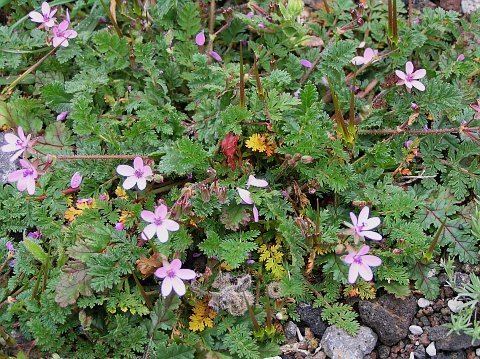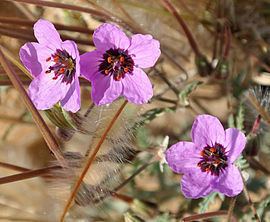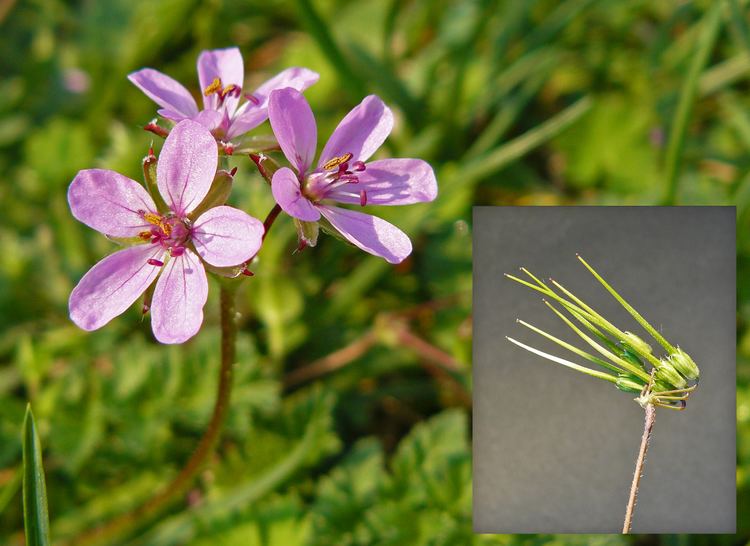Rank Species | Genus Erodium Higher classification Erodium | |
 | ||
Similar Erodium, Geraniaceae, Geranium robertianum, Field bindweed, Geranium molle | ||
Erodium cicutarium, also known as redstem filaree, redstem stork's bill, common stork's-bill or pinweed, is a herbaceous annual – or in warm climates, biennial – member of the family Geraniaceae of flowering plants. It is native to the Mediterranean Basin and was introduced to North America in the eighteenth century, where it has since become invasive, particularly of the deserts and arid grasslands of the southwestern United States.
Contents

Time lapse movie of erodium cicutarium movie 01
Distribution and ecology

The plant is widespread across North America. The plant grows as an annual in the northern half of North America. In the southern areas of North America, the plant tends to grow as a biennial with a more erect habit and with much larger leaves, flowers and fruits. It flowers from May until August. Common stork's-bill can be found in bare, sandy, grassy places both inland and around the coasts. It is a food plant for the larvae of the brown argus butterfly.
The seeds of this annual are a species collected by various species of harvester ants.
Description

It is a hairy, sticky annual. The stems bear bright pink flowers, which often have dark spots on the bases. The flowers are arranged in a loose cluster and have ten filaments – five of which are fertile – and five styles. The leaves are pinnate to pinnate-pinnatifid, and the long seed-pod, shaped like the bill of a stork, bursts open in a spiral when ripe, sending the seeds (which have little feathery parachutes attached) into the air.

Seed launch is accomplished using a spring mechanism powered by shape changes as the fruits dry. The spiral shape of the awn can unwind during daily changes in humidity, leading to self-burial of the seeds once they are on the ground. The two tasks (springy launch and self-burial) are accomplished with the same tissue (the awn), which is hygroscopically active and warps upon wetting and also gives rise to the draggy hairs on the awn.
Uses

The entire plant is edible with a flavor similar to sharp parsley if picked young. According to John Lovell's Honey Plants of North America (1926), "the pink flowers are a valuable source of honey (nectar), and also furnish much pollen". Among the Zuni people, a poultice of chewed root is applied to sores and rashes and an infusion of the root is taken for stomachache.
